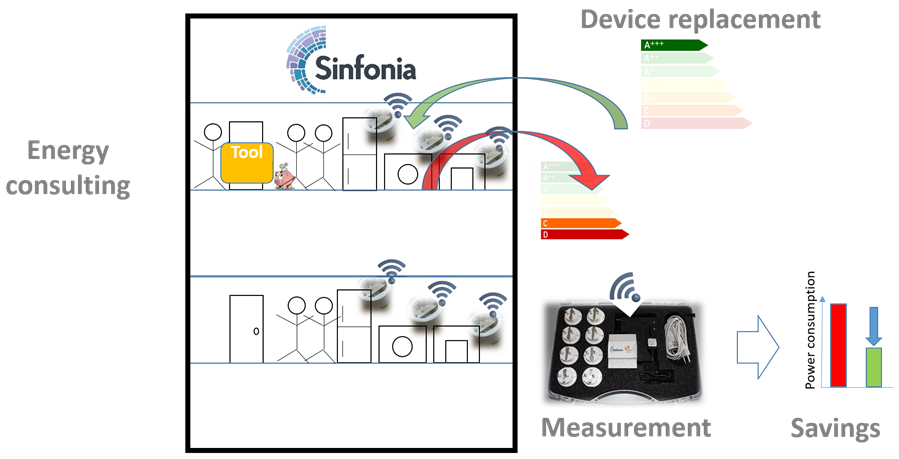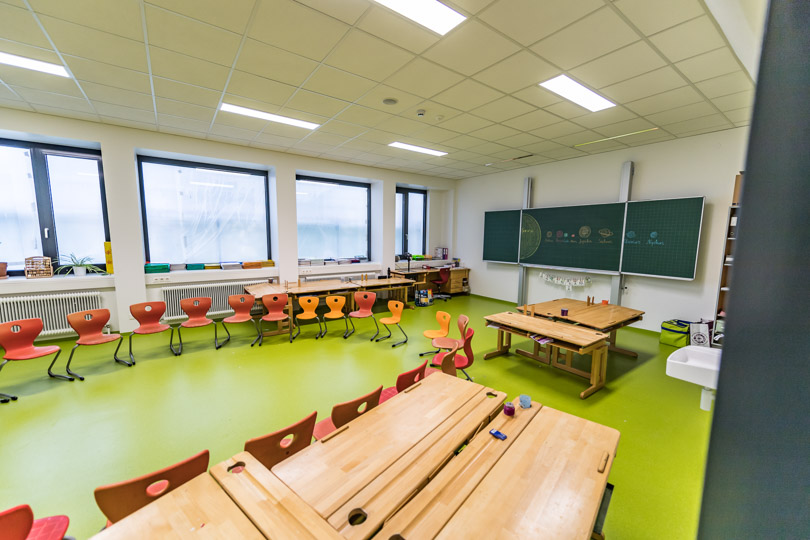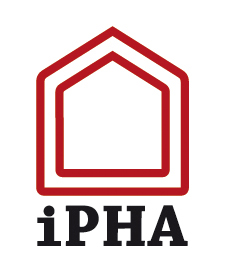You are here
Guidelines for an electric energy efficient household
Electric energy efficiency (EEE) of
household appliances and more

Bernhard Pfeifer, Innsbrucker Immobiliengesellschaft
Switch to LED technology
The switch to LED technology in each corridor and classroom allows for considerably reduced energy use. This means that in the summer months cooling is not necessary due to the reduced use of energy for lighting. Improved comfort is possible during periods of excessive heat in summer. Furthermore, the new LED technology is much better for visibility in each classroom. Consequential damage to the health of users (negative effects on eye health) due to poor quality lighting can thus be reduced. Greatly improved quality is achieved in the schools through the appropriate use of separate lighting for the blackboards.

Photo Source: Pfeifer, B.
Connectivity of the buildings and remote control
Connectivity of the buildings via KNX bus and remote control allows for significantly better energy management. Due to intelligent bus control technology, it is possible to optimise the building in case of overheating in summer and cooling down in winter. Furthermore, different sensors (wind, rain, sun etc.) enable intelligent intervention in the respective daily routine of the various users. Reprogramming of various scenarios can be carried out quickly. Different actual values (CO2 content, temperature, air humidity) can be recorded by means of sensors in the classrooms. On this basis active intervention is possible with regard to shading or regulation of the ventilation system. This allows for a significantly better indoor climate in the classrooms.
User behaviour
In apartments, different types of usage behaviour can be documented. How often does ventilation take place? Air humidity in the apartments, room temperatures and usage of e.g. heating or daily hot water consumption. Various insights can be derived from these measurements which can then be taken into account in the future.
Measurement of the electricity consumption (5 - 15 minute increments) makes it possible to analyse different consumption behaviours by means of the anonymously recorded electricity demand. This allows conclusions to be drawn regarding different models, e.g. the use of PV modules, or about how efficient shared heat generation facilities are. Among other things, hot water generation could possibly be changed to a different time of the day (from the current 22:00 p.m. to 06:00 a.m.).





